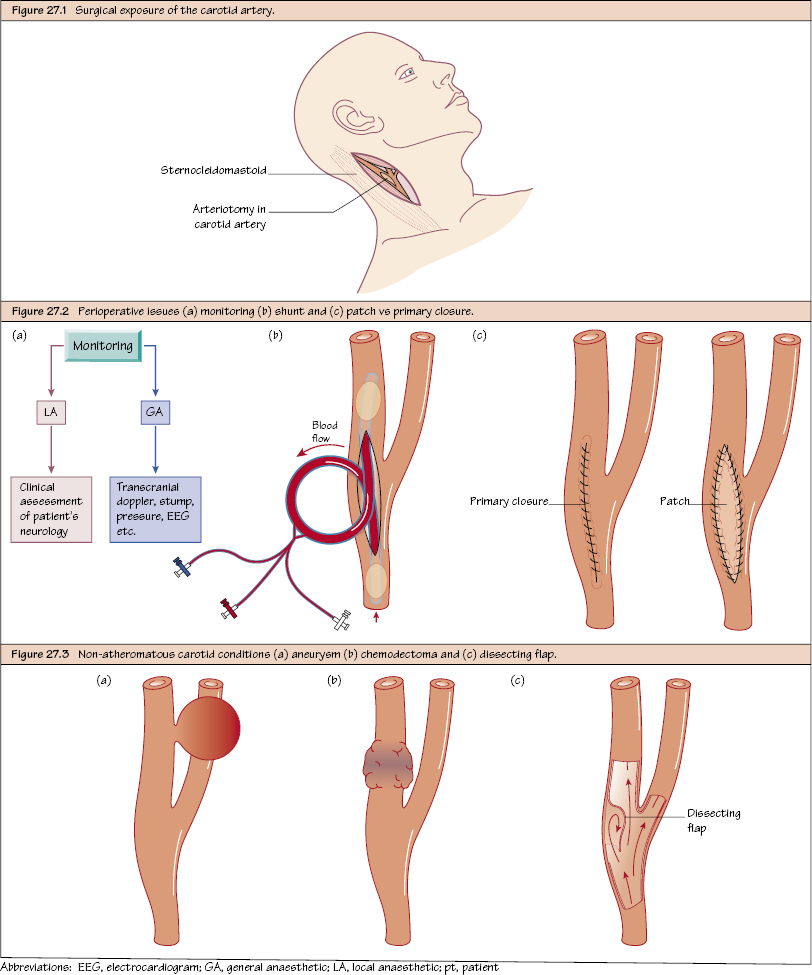Carotid Surgery By far the most common operation for carotid disease is for a significant carotid stenosis in the context of a stroke. Non-atheromatous carotid disease is briefly discussed at the end of this chapter. Carotid endarterectomy or stenting is indicated following a stroke or TIA affecting the carotid territory of the appropriate side. Carotid surgery is now considered an urgent treatment because it has become clear that a TIA can be a warning sign of impending further TIAs or major stroke; hence, in general, the sooner the carotid surgery, the bigger the risk reduction benefit. Within 2 weeks is considered acceptable. Beyond this the benefit reduces weekly, especially in women. For a common operation with a huge amount of scientific data behind it, there is still considerable debate in carotid surgery. The principal controversy is how do you monitor

Overview
Context
Carotid Endarterectomy
Procedure
Controversies
![]()
Stay updated, free articles. Join our Telegram channel

Full access? Get Clinical Tree


